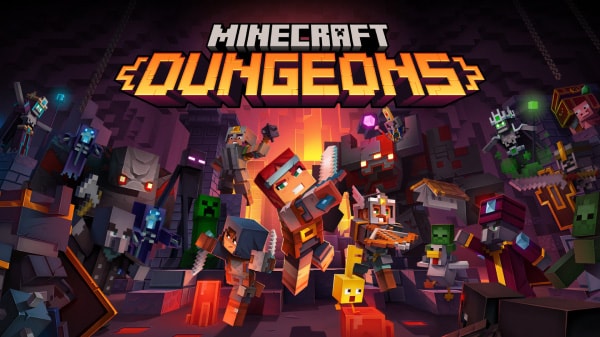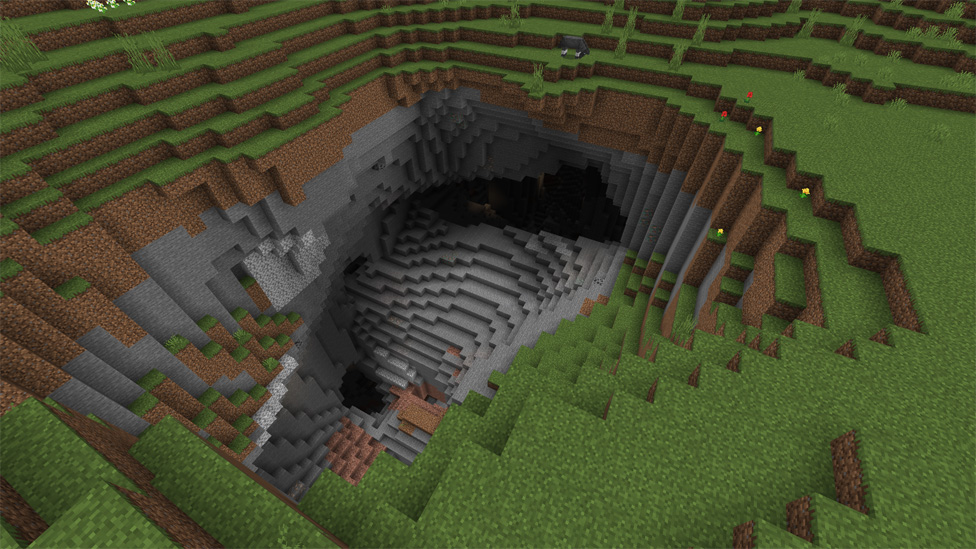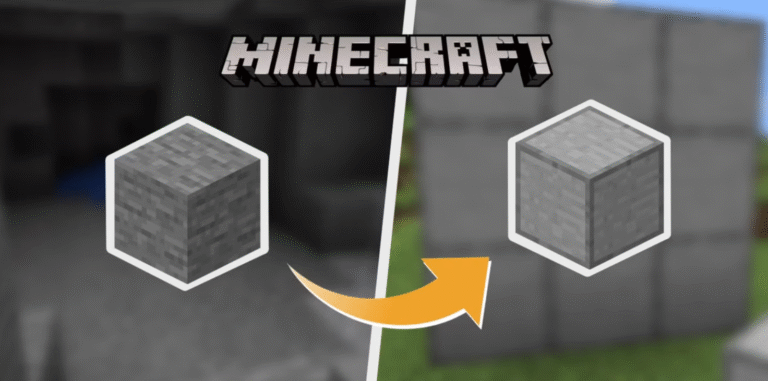
In the vast world of Minecraft, hidden beneath the surface lies a treasure trove of adventure—dungeons. These small, mossy stone chambers are home to dangerous mobs and valuable loot, making them a thrilling find for any player. Whether you’re looking for rare items, experience points, or just the satisfaction of exploration, learning how to locate dungeons can greatly enhance your gameplay.
In this guide, we’ll walk you through the best strategies, tips, and tools to help you discover these elusive underground structures with ease.
What is Minecraft

Minecraft is a game built on creativity, adventure, and community. Whether you want to survive the night against hostile creatures or craft a stunning masterpiece block by block, the choice is entirely yours. And if stepping into a massive, open world on your own sounds a little intimidating—don’t worry. We’re here to guide you through what Minecraft is all about.
What’s the Goal of Minecraft?
The beauty of Minecraft lies in its freedom. There’s no single objective or endgame—just endless possibilities. That’s why it’s often called a “sandbox game.” You can play however you like: build imaginative structures, explore vast landscapes, take on exciting challenges, or simply shape the world around you with blocks.
From battling monsters to taming animals, the way you interact with creatures is up to you. Minecraft offers room for thrilling adventures, peaceful building sessions, or anything in between. Plus, you’re never truly alone—you can share your world with friends or join massive multiplayer servers filled with other players and their creations.
What age is Minecraft for?
Minecraft is generally recommended for ages 8 and up, but the appropriate age can vary depending on the version of the game and the individual child’s maturity.
Minecraft: Java & Bedrock Editions (PC/Console)
Rated E10+ (Everyone 10 and up) by the ESRB (Entertainment Software Rating Board)
Contains fantasy violence (like fighting skeletons or zombies), but no gore or adult content.
Players can chat online and join multiplayer servers, so parental supervision or restrictions are recommended for younger players.
Minecraft: Education Edition
Designed specifically for use in classrooms
Suitable for ages 6+
Focuses on learning, teamwork, and problem-solving, with no combat.
How to find dungeons in Minecraft
Know What a Dungeon Looks Like
Before you start searching, it helps to know what you’re looking for:
Small room (about 5×5 to 7×7 blocks)
Walls made of cobblestone and mossy cobblestone
1 Mob spawner in the center
Up to 2 chests with loot
Usually no doors or windows
Explore Caves and Underground Areas

The most common way to find dungeons is to explore natural cave systems:
Bring torches, food, and weapons
Follow cave tunnels and keep an eye out for mossy cobblestone—that’s a giveaway!
Listen for mob sounds—if you hear a lot of zombies or skeletons in one area, a dungeon might be nearby
Dig Below the Surface
Dungeons can generate at any height below Y=72, but they’re most often found between Y=0 and Y=40.
Digging or mining branch tunnels (a.k.a. strip mining) can expose hidden dungeons
Be cautious—you might dig straight into a dangerous mob spawner!
Use Tools Like Chunkbase (Optional)
If you’re okay with using external help:
Visit chunkbase.com and enter your world seed
Enable the Dungeon overlay to find exact coordinates
Works in Java Edition and some Bedrock versions
Search in Specific Biomes
Dungeons aren’t biome-specific, but they often generate under plains, deserts, or forests where surface caves are more common. This can make finding entry points easier.
Check Near Villages and Ravines
Sometimes dungeons generate near:
Ravines, which cut through the ground and expose dungeon walls
Mineshafts or villages where multiple underground structures are close together.
Bonus Tips for Survival
Bring a shield and a sword or axe
Light up the mob spawner with torches to stop it from spawning enemies
Consider turning the dungeon into an XP farm after you’ve cleared it
Recognize Mob Patterns
Dungeons often create clusters of mobs in one area:
If you’re suddenly attacked by multiple zombies or skeletons in a small space, you may have found a spawner
Place torches quickly and look around for mossy cobblestone to confirm
Look for Natural Exposures
Dungeons are sometimes partially visible through:
Ravines (which cut through underground layers)
Sinkholes or collapsed terrain
Mineshaft intersections or cave ceilings/walls
Surface holes that open into large underground systems
Bring the Right Tools
Prepare before you go dungeon hunting:
Torches – To light up the dungeon and stop mob spawning
Iron/diamond tools – To break blocks and fight mobs
Armor and a shield – To protect yourself
Pickaxe – To collect cobblestone or clear space
Buckets of water – To help control mobs or lava
Food – To heal quickly during fights
What a dungeons in Minecraft for?
Finding Loot
Dungeons contain chests filled with valuable items you can’t always craft or find easily. You might find:
Enchanted books
Saddles
Name tags
Horse armor
Golden apples
Discs for music players (jukeboxes)
Spawning Mobs
At the center of every dungeon is a mob spawner. It generates zombies, skeletons, or spiders, depending on the dungeon. This can be dangerous—but also useful.
Creating XP Farms
Players often turn dungeons into XP (experience) farms by:
Disabling the spawner with torches
Building a system to safely collect and kill the mobs
Gaining experience points and item drops (like bones, arrows, or rotten flesh)
This is one of the easiest ways to farm XP for enchanting gear or repairing items with an anvil.
What is the easiest way to find a dungeon?
The easiest way to find a dungeon in Minecraft is to explore natural cave systems and listen carefully for mob sounds while keeping an eye out for mossy cobblestone. Here’s why and how:
Why This Method Works
Dungeons generate connected to caves or underground ravines, so exploring existing caves increases your chances.
The mob spawner inside dungeons emits sounds like zombies groaning, skeletons rattling, or spiders hissing—these sounds can guide you directly to the dungeon.
Mossy cobblestone is unique to dungeons, so spotting patches of it in a cave is a clear visual clue.
Step-by-Step Guide
Bring plenty of torches and weapons for safety.
Find a cave entrance on the surface—plains, forests, and deserts are great places to start.
Follow the cave tunnels deeper underground, preferably between Y=0 and Y=40 where dungeons commonly spawn.
Listen closely for mob noises; if you hear a cluster of mobs in one spot, start placing torches to reveal the dungeon.
Look for mossy cobblestone walls around the mob noises—that’s the dungeon’s signature block.
Light up the mob spawner immediately to stop mobs from overwhelming you.
How to find caves using F3?
Open the F3 Debug Screen
Press F3 (on Java Edition) to open the debug overlay. It shows lots of info: coordinates, biome, light levels, and more.
Check Your Coordinates
Focus on your Y-coordinate (vertical height). Caves typically generate below Y=64, often between Y=12 and Y=50.
If you’re standing at ground level (around Y=64), look for entrances downward.
Look at the Light Level (Light: )
The debug screen shows the current light level where you’re standing.
Caves are naturally dark, so if you’re walking and notice the light level suddenly drops to 0 or 1, it often means you’re entering a cave or underground space.
Watch the Biome and Block Info
You can see the block you’re looking at in the debug info.
Point your crosshair at the ground and look for air blocks below or ahead, which might indicate a cave opening.
Use the Chunk Borders (Press F3 + G)
Press F3 + G to show chunk borders.
While this doesn’t directly show caves, it helps you systematically explore areas by mining or searching chunk by chunk, increasing your chance to find caves.
Listen for Mob Sounds
As you move, listen for mobs. Mob noises often come from caves, helping you identify nearby openings.
How rare are dungeons in Minecraft?
Dungeon Spawn Frequency
On average, there is roughly 0.1 to 0.2 dungeons per chunk (a chunk is a 16×16 block area).
This means that in every 5 to 10 chunks you explore underground, you might find one dungeon.
Because the Overworld is huge, dungeons are scattered randomly, so they can feel rare—especially if you haven’t explored many underground areas yet.
Factors Affecting Dungeon Rarity
World Seed: The random seed that generates your world affects dungeon placement.
Biome: Dungeons can spawn in any Overworld biome—plains, deserts, forests, etc.—so biome doesn’t affect rarity much.
Y-Level: Dungeons generate below Y=72, most commonly between Y=0 and Y=40.
Generation: Dungeons often generate near caves, ravines, or underground structures, so exploring natural caves increases your chances.
Finding dungeons in Minecraft adds an exciting layer of adventure and reward to your gameplay. By exploring caves, listening for mob sounds, watching for mossy cobblestone, and digging strategically at the right depths, you can uncover these hidden underground chambers filled with valuable loot and mob spawners. Whether you’re after rare items, experience points, or a new challenge, knowing how to locate dungeons will make your Minecraft journey even more rewarding. So gear up, light those torches, and dive into the depths—your next great discovery awaits!



